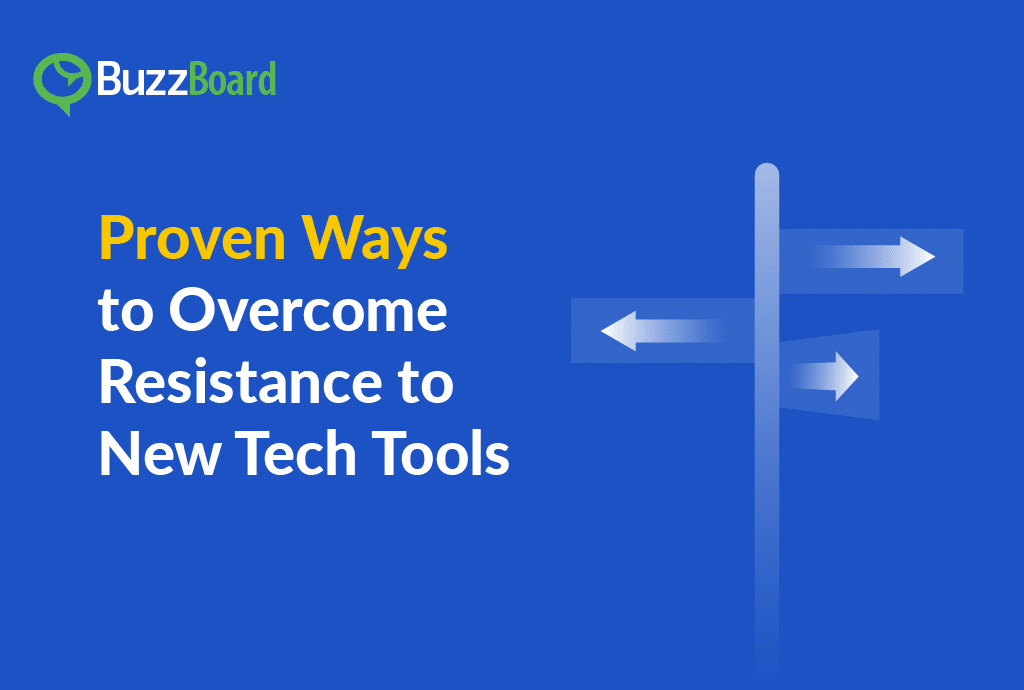Innovation promises efficiency, productivity, and transformation, yet they often encounter a formidable foe: resistance. In this age of rapid technological evolution, where the capacity to adapt and integrate new tools into our workspaces is a skill of great significance, we can’t let it hold us back from reaching our full potential.
But the good news is that resistance is not a dead end! Whether it’s the apprehension of stepping into the unknown or the reluctance to bid farewell to familiar methods, overcoming resistance to new tech tools is a challenge that businesses must confront head-on.
So whether you’re an entrepreneur looking to adapt to the changing digital landscape or seeking guidance to lead your team through a tech-driven transformation, the key to unlocking the vast potential of new tech tools lies in the ability to break through the walls of resistance with knowledge, communication, and empathy. It’s time to decode the enigma of resistance and unleash the full power of innovation!
1. Education: Knowledge Is Key
Resistance to new technology is often rooted in fear. People are naturally inclined to stick to what they know because it feels safe and comfortable. Understanding this psychology is the first step in overcoming resistance, which can be achieved by imparting the right knowledge.
Encourage open discussions to address fears and misconceptions about the new tech tools. Show how the benefits outweigh the risks. Invest in thorough, hands-on training programs. This might include workshops, webinars, or online courses. Make sure these resources are readily available and tailored to the needs of your team members.
2. Look Through the Product Lens
“Successful products are never measured by their delivery alone, but by the impact they make, and that includes the entire go-to-market motion, rollout and adoption.” – Maya Mandel, Helios
Placing the user’s needs and experiences at the center of choosing tech tools that are intuitive, efficient, and ultimately irresistible can pave the way for smoother transitions and enthusiastic acceptance of new technology. Just like you design your products and services keeping your customer’s intention in mind, while onboarding a new technology, consider the interest of your own—the players of your team. This transformative approach is often termed as ‘product thinking’.
Some of the major tenets of product thinking are empowering users by focusing UX, iterative development, and continuous feedback. When individuals feel they have a stake in the development and decision-making process, they are more likely to embrace change. In the context of new tech tools, this means involving your users in the selection process, seeking their feedback, and making them an integral part of the transition journey.
3. One Tool, Multiple Solutions
Multifunctionality is a remarkable trait of many contemporary tech tools. Yet during the purchase process, organizations often fall in the trap of buying an application with one or hardly problem solving capacity. Note that single-use functionalities might seem appealing at first but can affect productivity, create silos, and give rise to unnecessary costs, ultimately hindering the progress of your tech adoption initiatives.
On the contrary, the magic of a multi-use tech tool is that it caters to a wide spectrum of needs, making it more approachable and adaptable. Rather than disrupting established routines, it can seamlessly integrate into various aspects of your business operations. This adaptability addresses one of the primary causes of resistance—the fear of displacement.
So while introducing a new tool, highlight its versatility, how this single solution can address multiple needs. This will make it more enticing and easier for your organization and team to adapt.
4. Detect the Real Reason Behind Your Teams Producing Laggards
The reasons behind tech tool resistance can vary widely, from apprehension about change to concerns over disruption. That’s why it’s essential to dig deeper, identify the root causes, and tackle them skillfully.
Recognizing that the laggards or resistors within your team may have legitimate concerns, fears, or obstacles that impede their adoption of new tech tools is the first step. Now, is it just the regular reasons, indolence, or some more grave that’s keeping them away from the tech tools you’ve integrated into the system?!
Don’t hesitate from reassessing the efficiency of the tool… was the previous tool offering better usefulness or comfort in any way? Can proper training help the laggards cope better? Also, try to think a little out of the box here. See if pairing them with adept and tech-savvy peers or shifting them to another group makes any difference.
5. Treat Employees with Success Stories and Contests
Cultivating a culture of innovation and engagement can be a game-changer. Sharing internal success stories provides tangible proof of the positive impact that new tech tools can have on a team’s performance. These stories highlight real-world examples of how individuals or teams leveraged the tools to achieve success, improving efficiency, productivity, or collaboration. Success stories humanize technology, making it relatable and attainable for all members of the organization.
Moreover, weekly contests inject an element of fun and competition into the tech adoption process. They encourage employees to explore and use new tools by offering incentives and recognition for their engagement. These contests serve as a gentle nudge towards adopting the technology and can be a catalyst for building momentum.
The world of technology will continue to evolve, and with it, the tools and opportunities that come with it. While resistance may be a natural response to change, it doesn’t have to be a roadblock.
By understanding the root causes of resistance and implementing the strategies mentioned above, you can definitely make way for a smoother transition and a climate of receptivity amongst your workforce. Remember, the future belongs to those who are willing to embrace it, and overcoming resistance to new tech tools is the first step towards unlocking its limitless potential.








